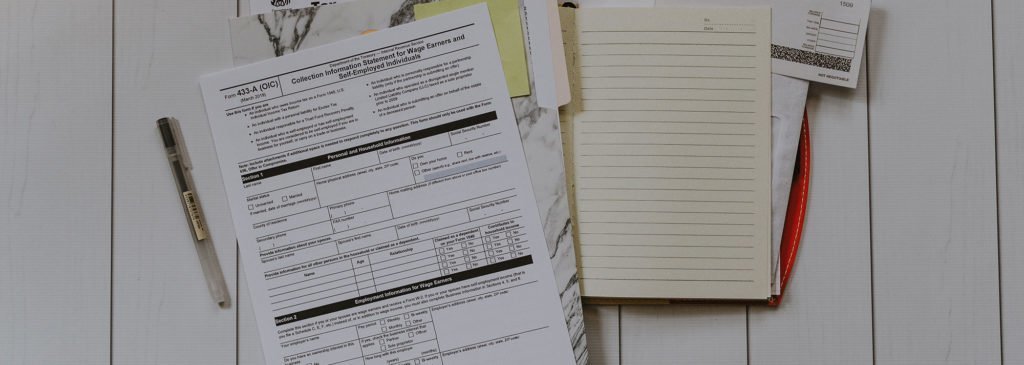Tax
Selling your financial planning practice: Have you planned for the tax?
09 September 2019
Tax
09 September 2019

Matthew McKee is a Partner, Taxation Law at Brown Wright Stein Lawyers. He is an experienced tax and superannuation lawyer who regularly provides tax and commercial related advice to accountants, financial planners & small to medium enterprises.
There are four key tax issues that planners need to consider when selling their practice.
Financial planners will be fully aware that there can be a significant difference between a pre-tax return and an after tax return. A decision that is made with only regard to the pre-tax return, can lead to be a person getting less value than they expect.
When it comes to the sale of a financial planning practice, it’s worth considering some of the tax issues that may arise on a sale of a practice. This article will explore four aspects of selling a practice:
A key driver of tax on the sale of assets is the nature of the asset being sold.
Revenue vs capital assets
Assets, effectively, fall within two broad categories for tax: assets taxed under the capital gains tax (CGT) regime and assets that are not. For simplicity, I will refer to assets taxed out of the CGT regime as revenue assets.
The sale of financial practices is somewhat unique to other business sales in that it is often just selected assets that are sold, such as the client list, client records and rights to receive commissions (although this is decreasing under a fee-for-service environment).
Occasionally, a financial planning practice will be sold as a going concern, in which case the assets sold would include goodwill, intellectual property (trademarks and copyright) and possibly, plant and equipment.
Most of the assets sold in respect of a typical sale of a financial practice will be capital assets but, in some cases, there will be revenue assets sold.
There are a lot of differences around the tax treatment of revenue assets and capital assets but, in short, the key observations are as follows:
Entity sale vs asset sale
A critical decision to be made when selling a business is whether the sale will be a sale of the underlying business assets (an asset sale) or the sale of the vehicle that operates the business (an entity sale).
With the sale of a financial planning practice, the sale most commonly happens by way of an asset sale but there may be occasions where the seller can insist upon an entity sale.
There can be significant tax differences depending upon whether the sale is an asset sale or entity sale as follows:
Where an asset is taxable under the CGT regime, the capital gain (the difference between the asset’s cost base and the capital proceeds from the disposal) is included in the person’s assessable income.
Capital proceeds
The capital proceeds in connection with a CGT event are the sum of any money that the person receives, or is entitled to receive, and the market value of any property they receive, or are entitled to receive, in connection with the CGT event.
Importantly, deferred consideration is included in capital proceeds immediately, even though it may not be received until some future time. This means that, where a purchase price is paid in instalments over a substantial period of time, the seller will be paying tax on money not yet received and, if the purchaser cannot afford to pay it, they will never receive.
Where the purchaser or seller agrees to discharge a liability of the seller, the liability discharged will be usually included in the capital proceeds of the seller.
There is also a market value substitution rule that applies, in general terms, to deem the capital proceeds to be the market value of the CGT asset.
CGT 50 per cent general discount
The CGT 50 per cent general discount operates to reduce a person’s capital gain by 50 per cent. It is only available to individuals and trusts (but only to the extent that an individual is entitled, directly or indirectly through other trusts, to the capital gain from the trust in the income year).
The CGT 50 per cent general discount is also only available where the asset has been held for more than 12 months at the time of the CGT event.
Small business CGT concessions
There are four main concessions under the small business CGT concessions, which are as follows:
There are ‘basic conditions’ that must be satisfied in order for any of the above concessions to be available to a taxpayer.
Where the capital gain is made by a company, the amount reduced under the active asset 50 per cent reduction is not subject to tax for the company. The effect of this is if it’s paid out to a shareholder as a dividend, it will be a frankable dividend but, as the company did not pay tax on the amount, if there are no surplus credits as a result of the company’s other operations, then the payment of the amount can be expected to be an unfranked dividend to be taxed at the shareholder’s marginal rate.
If the active asset 50 per cent reduction is accessed, it will usually be better to access the funds sheltered from tax by the active asset 50 per cent reduction by having them paid out by a liquidator on liquidation of the company.
The rules around the availability of the small business CGT concessions are complex and it should never simply be assumed that the concessions are available.
Purchase price adjustments
Provisions that can result in purchase price adjustments (either up or down) can have unintended tax consequences. It is common in the sale of a financial planning practice for the purchaser to require a clawback of the purchase price if certain conditions are not met.
There is a repayment rule for CGT that reduces a seller’s capital proceeds by an amount that they are required to repay to the purchaser after the sale.
However, this will generally not apply to a clawback of the purchase price based on the economic performance of the assets sold following the sale (often referred to as a ‘negative earnout’).
In such circumstances, there are more complex tax rules that need to be considered to avoid an outcome where the seller is taxed on an amount that they are required to repay.
Employees are not always taken on by a purchaser for a sale of a financial planning practice but, when they are, there are tax considerations.
Where a purchaser assumes the liability for the entitlements of employees that are taken on, the ATO considers that the amount assumed is consideration for the CGT event on the sale of the business. The purchaser will receive a deduction when they actually pay the entitlements. The effect of this is that the seller is assessed on the payment but the purchaser receives a deduction when they actually make the payment.
There are three general approaches adopted to overcome this seeming inequity:
Each approach has a different tax outcome.
GST is imposed where a person makes a taxable supply. Supplies that are input taxed supplies (e.g. residential premises that are not new residential premises) or financial supplies (e.g. shares in a company) are not taxable supplies and no GST is payable.
A share sale or unit sale is a financial supply. As such, with an entity sale, there will be no GST payable.
With an asset sale, GST will nearly always be payable, unless the going concern exemption is available and the parties choose to apply it. There are a number of conditions for the going concern exemption to apply but the key one, and a condition that can be difficult to satisfy for the sale of a financial planning practice, is that the seller must supply everything necessary for the continued operation of the enterprise.
The requirement that the seller supply everything necessary for the continued operation of the enterprise will usually require that all existing leases in the business be assigned. How this can be effectively achieved varies from state to state.
Importantly, the going concern exemption simply overcomes the need for the seller to pay GST and the purchaser to claim the GST back from the ATO through input tax credits. That is, the primary benefit of the exemption is that it removes a potential cash flow detriment for the purchaser. Accordingly, the application of the going concern exemption is usually driven by the purchaser and not the seller.
The myriad of tax issues on the sale of a financial planning practice can mean that, if not structured properly, the value obtained by the seller may be lower than they expected.
Understanding the tax issues involved when negotiating a sale is critical to ensuring that the expected value is obtained.
Tags in this article: Tax
 | Selling your financial planning practice: Have you planned for the tax?09 September 2019 There are four key tax issues that planners need to consider when selling their practice. Financial planners will be fully aware that there can be a significant difference between a pre-tax return and an after tax return. A decision that is made with only regard to the pre-tax return, can lead to be a person getting less value than they expect. When it comes to the sale of a financial planning practice, it’s worth considering some of the tax issues that may arise on a sale of a practice. This article will explore four aspects of selling a practice:
1. What is being sold?A key driver of tax on the sale of assets is the nature of the asset being sold. Revenue vs capital assets Assets, effectively, fall within two broad categories for tax: assets taxed under the capital gains tax (CGT) regime and assets that are not. For simplicity, I will refer to assets taxed out of the CGT regime as revenue assets. The sale of financial practices is somewhat unique to other business sales in that it is often just selected assets that are sold, such as the client list, client records and rights to receive commissions (although this is decreasing under a fee-for-service environment). Occasionally, a financial planning practice will be sold as a going concern, in which case the assets sold would include goodwill, intellectual property (trademarks and copyright) and possibly, plant and equipment. Most of the assets sold in respect of a typical sale of a financial practice will be capital assets but, in some cases, there will be revenue assets sold. There are a lot of differences around the tax treatment of revenue assets and capital assets but, in short, the key observations are as follows:
Entity sale vs asset sale A critical decision to be made when selling a business is whether the sale will be a sale of the underlying business assets (an asset sale) or the sale of the vehicle that operates the business (an entity sale). With the sale of a financial planning practice, the sale most commonly happens by way of an asset sale but there may be occasions where the seller can insist upon an entity sale. There can be significant tax differences depending upon whether the sale is an asset sale or entity sale as follows:
2. Assets taxable under the CGT regimeWhere an asset is taxable under the CGT regime, the capital gain (the difference between the asset’s cost base and the capital proceeds from the disposal) is included in the person’s assessable income. Capital proceeds The capital proceeds in connection with a CGT event are the sum of any money that the person receives, or is entitled to receive, and the market value of any property they receive, or are entitled to receive, in connection with the CGT event. Importantly, deferred consideration is included in capital proceeds immediately, even though it may not be received until some future time. This means that, where a purchase price is paid in instalments over a substantial period of time, the seller will be paying tax on money not yet received and, if the purchaser cannot afford to pay it, they will never receive. Where the purchaser or seller agrees to discharge a liability of the seller, the liability discharged will be usually included in the capital proceeds of the seller. There is also a market value substitution rule that applies, in general terms, to deem the capital proceeds to be the market value of the CGT asset. CGT 50 per cent general discount The CGT 50 per cent general discount operates to reduce a person’s capital gain by 50 per cent. It is only available to individuals and trusts (but only to the extent that an individual is entitled, directly or indirectly through other trusts, to the capital gain from the trust in the income year). The CGT 50 per cent general discount is also only available where the asset has been held for more than 12 months at the time of the CGT event. Small business CGT concessions There are four main concessions under the small business CGT concessions, which are as follows:
There are ‘basic conditions’ that must be satisfied in order for any of the above concessions to be available to a taxpayer. Where the capital gain is made by a company, the amount reduced under the active asset 50 per cent reduction is not subject to tax for the company. The effect of this is if it’s paid out to a shareholder as a dividend, it will be a frankable dividend but, as the company did not pay tax on the amount, if there are no surplus credits as a result of the company’s other operations, then the payment of the amount can be expected to be an unfranked dividend to be taxed at the shareholder’s marginal rate. If the active asset 50 per cent reduction is accessed, it will usually be better to access the funds sheltered from tax by the active asset 50 per cent reduction by having them paid out by a liquidator on liquidation of the company. The rules around the availability of the small business CGT concessions are complex and it should never simply be assumed that the concessions are available. Purchase price adjustments Provisions that can result in purchase price adjustments (either up or down) can have unintended tax consequences. It is common in the sale of a financial planning practice for the purchaser to require a clawback of the purchase price if certain conditions are not met. There is a repayment rule for CGT that reduces a seller’s capital proceeds by an amount that they are required to repay to the purchaser after the sale. However, this will generally not apply to a clawback of the purchase price based on the economic performance of the assets sold following the sale (often referred to as a ‘negative earnout’). In such circumstances, there are more complex tax rules that need to be considered to avoid an outcome where the seller is taxed on an amount that they are required to repay. 3. EmployeesEmployees are not always taken on by a purchaser for a sale of a financial planning practice but, when they are, there are tax considerations. Where a purchaser assumes the liability for the entitlements of employees that are taken on, the ATO considers that the amount assumed is consideration for the CGT event on the sale of the business. The purchaser will receive a deduction when they actually pay the entitlements. The effect of this is that the seller is assessed on the payment but the purchaser receives a deduction when they actually make the payment. There are three general approaches adopted to overcome this seeming inequity:
Each approach has a different tax outcome. 4. GSTGST is imposed where a person makes a taxable supply. Supplies that are input taxed supplies (e.g. residential premises that are not new residential premises) or financial supplies (e.g. shares in a company) are not taxable supplies and no GST is payable. A share sale or unit sale is a financial supply. As such, with an entity sale, there will be no GST payable. With an asset sale, GST will nearly always be payable, unless the going concern exemption is available and the parties choose to apply it. There are a number of conditions for the going concern exemption to apply but the key one, and a condition that can be difficult to satisfy for the sale of a financial planning practice, is that the seller must supply everything necessary for the continued operation of the enterprise. The requirement that the seller supply everything necessary for the continued operation of the enterprise will usually require that all existing leases in the business be assigned. How this can be effectively achieved varies from state to state. Importantly, the going concern exemption simply overcomes the need for the seller to pay GST and the purchaser to claim the GST back from the ATO through input tax credits. That is, the primary benefit of the exemption is that it removes a potential cash flow detriment for the purchaser. Accordingly, the application of the going concern exemption is usually driven by the purchaser and not the seller. ConclusionThe myriad of tax issues on the sale of a financial planning practice can mean that, if not structured properly, the value obtained by the seller may be lower than they expected. Understanding the tax issues involved when negotiating a sale is critical to ensuring that the expected value is obtained. Footnotes
|
HelpSelect and copy the HTML code above, or
Thank you a copy has been sent to your email. Your e-book will begin automatically. Please click the link below to download manually.
Click here to download



